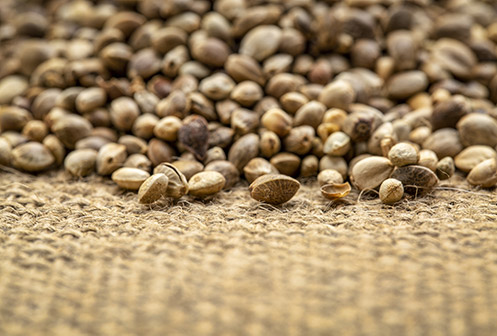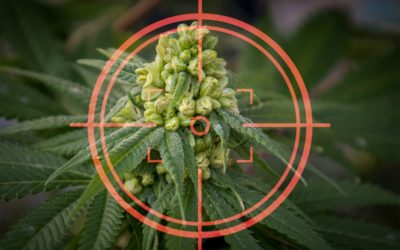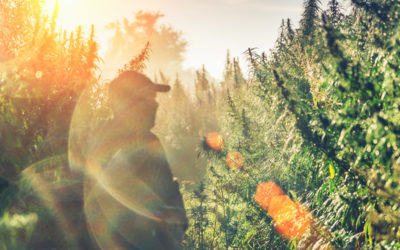Choices hemp farmers weigh early in the year for purchasing seed stock will echo into the next year — and beyond. How hemp farmers select plant genetics strongly influences their business decisions and strategies into the foreseeable future.
These choices have major impacts, from the structure and management of hemp farm operations and projected labor costs, to the grade of hemp to grow and the finished products to manufacture. Even the legality — or perhaps, more accurately, the legal barriers — of sales to target markets within healthy distribution channels all rest with the hemp seeds a farmer chooses to put in the ground.
Genetic selection and subsequent planning are particularly important in light of the USDA interim regulations that went into effect Oct. 31. Federal regulators have made it clear that, while hemp has officially been removed from the DEA’s controlled substances list, they will be monitoring the industry closely. Staying within federal guidelines will be imperative amid this burgeoning business environment.
Related: Understanding government rules to grow legal and compliant CBD hemp
Obtain certificates of analysis from reputable labs
Start by ensuring compliant and stable hemp genetics. Failing to grow genetics that fall within the USDA guidelines risks destruction of crops or even criminal prosecution. While the details of the interim guidelines are for another article, the law from which these issues arise rests on the federal definition of hemp. If a hemp crop tests over 0.3% THC, that’s technically “marijuana,” according to the federal government.
Translation: You don’t want to buy high THC seeds or seeds with unstable genetics!
The most straightforward way to ensure seeds purchased will grow into a compliant hemp harvest is by requesting third-party, verifiable test results — often referred to as certificates of analysis (COAs) — from analytical labs licensed by all necessary state agencies and accredited by the National Environmental Laboratory Accreditation Program (NELAP) for demonstrating good scientific standards.
It’s even better if these COAs include names of verifiable and reputable hemp farms; it’s a plus if there are multiple test results (batches) of the same variety. COAs are twice as valuable if they show multiple seasons and/or multiple hemp farms. Results for the same genetics through multiple seasons indicates that farms are willing to run those hemp seeds again after encountering few to no issues. Stability in hemp genetics is not a guarantee in this newly legalized industry, so honest endorsements are invaluable.
“Germination should be at a 94-97% success rate and produce a miniscule 1 hermaphrodite per 4,000 females.”
Talk to fellow farmers and research online. Hermaphrodites, high ratios of males in feminized hemp seeds and poor germination rates are a few of the main issues that plague hemp farmers unfamiliar with the seed stock they are growing. Good reputations go a long way when it comes to hemp seed.
Diggs Terra, a breeder for Sovereign Fields, says germination should be at a 94-97% success rate and produce a miniscule 1 hermaphrodite per 4,000 females. If numbers like these are not quoted from a hemp seed seller, it may be better to leave the experimenting up to the breeders.
The pinnacle would be finding hemp genetics that meet all of these criteria and also have been verified in partnership with university pilot programs. With strict methods and standardized cultivation practices, these institutions have the ability and funding to experiment with the potentials and pitfalls in new hemp genetics. Working with organizations in such an official capacity also will demonstrate a desire to emulate best business practices, which often bodes well with both consumers and industry regulators.
Determine your target market
Now for the brass tacks. Who will purchase your hemp harvest? Do you have a buyer lined up with specific products in mind, or do you need to be versatile and flexible with the ability to meet market demands in flux? Do your clients want CBD? CBG?
Hemp farmers who don’t have a specific buyer or consumer product in mind need dynamic post-production capabilities, possible only if starting with versatile hemp genetics. If a farmer does have specific, finished products in mind, hemp seeds can be selected accordingly and production tailored to maximize the seeds’ potential and high performance in the farm’s market sector.
In a dry, hot Mediterranean climate with a tendency for a later start to fall rains, the chances of pulling off a hemp crop with dense, smokeable colas are much better, though seeking heat and drought-tolerant varieties will be necessary. Farmers can buy boutique hemp varieties that flower based on photoperiod, resembling the high-THC cannabis we are used to seeing — but will test as compliant hemp. These traits of dense structure, smell and flavor, as well as high-cannabinoid production, are desirable to the smokable hemp consumer base.

Here’s the icing on the cake: Flower that doesn’t make the grade as smokable hemp still can be funneled into the biomass sector of the market to offset costs and waste, harnessing the full potential of hemp’s versatility.
When growing hemp in climates with high humidity or a short growing season, a different seed-buying strategy will be needed. For crops whose final destination is extraction for such products as CBD isolate, farmers can be less concerned with specific harvest times or cola structure stated in plant genetics. As breeding develops, more viable options are popping up that can provide some of the versatility of a full-term, “full-nug” hemp harvest without requiring such an ideal climate or long growing season.
In particular, autoflower genetics that go into their flowering cycle when plants reach maturity — not based on the season’s photoperiod — are beginning to break into the industrial hemp space. These hemp varieties can pave the way for a mid-season harvest in time to pull off a late, second harvest, or simply can ensure that early frost or rain don’t ruin a season of hard work. With some hemp strains reportedly developing into quality, smokable hemp, the potential for versatile autoflower genetics quenching the hemp market early in the season during its traditional “drought” — and before the fall harvest flood — could mean higher hemp prices and an easier time selling crops.
Related: Discover Lightning Autoflower — 75 days from germination to harvest
Farmers tend to consider less often the specific cannabinoid or cannabinoids to cultivate. Genetics high in CBD are the most popular but have flooded the market. High CBG genetics are much more likely to be compliant but less available and, thus, less likely to flood the market when harvest time comes. Varietals with high production of other lesser known cannabinoids also are quietly hitting the scene. Again, if the farming situation permits and a farmer’s product isn’t already spoken for, a variety of genetics opens doors to market versatility and offers the flexibility to mirror a changing consumer base.
Choose CBD hemp seeds for your farm’s footprint
Once farmers have considered all the factors that go into planning, it’s time to map out that plan in the parameters of a hemp farm’s footprint. Can you pull off multiple hemp harvests in one season? Do you need to stagger harvests simply to maximize drying space and actually harvest everything that can be planted on the farm’s acreage?

While greenhouses may take up valuable space, they can make square footage more efficient. Starting hemp seeds in greenhouses can provide an early advantage against frosts for spring planting.
Light-deprivation and light-assisted grow techniques can create multiple hemp harvests per season, staggering the workload and mitigating the need for seasonal labor. This also allows a hemp farmer to command top dollar for prices in the off season, before the flood of product in fall. Drying and curing in greenhouses also is a great way to utilize facilities for multiple functions so square footage can always be working in a hemp farmer’s favor — instead of sitting vacant and costing valuable dollars.
Selecting which hemp seed stock will do which job is crucial. Depending on climate and latitude, one might choose to run full-term strains inside light-deprivation greenhouses alongside an early, full-sun, autoflower run outside with the potential to dry in those very greenhouses. A second planting of autoflower or full-term might make it into the ground in time for a regular mid- to late-fall harvest.
Selecting multiple varieties of autoflower and full-term hemp strains, then organizing them in the field according to predicted finishing times will stagger harvests for ease of organization. This also can prevent traditional first-rain-of-the-season panic. Planting hemp strains that finish first, in close proximity to drying and processing facilities, will help harvest crews avoid a daily fight with live plants on their way in from the field.
Buying CBD hemp seeds is just the beginning
Choosing the right hemp genetics is where farming operations begin. While buying hemp seeds that will determine a farm’s future may seem like a daunting task, taking all the factors into account before purchasing can secure stable, trusted hemp genetics that complement a farm’s capabilities for output and execution.
Visualizing hemp cultivation from sale back to seed — according to a farm’s resources and footprint — is necessary in determining a farmer’s timeline and goals for maximizing the efficiency and output from a hemp seed purchase.






0 Comments